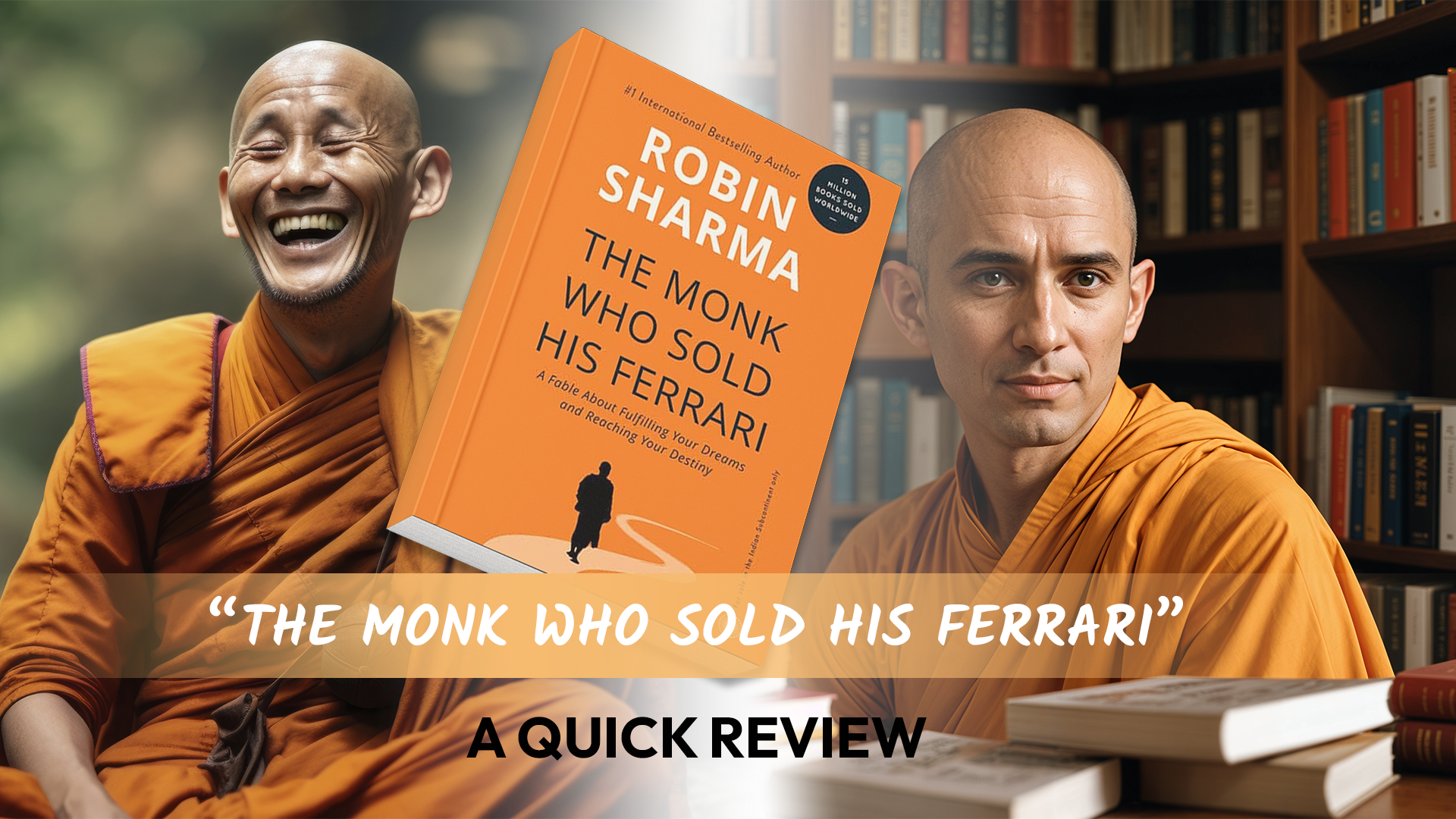Introduction
“The Monk Who Sold His Ferrari” by Robin Sharma is an inspiring tale that transcends the traditional boundaries of self-help literature. This fable about fulfilling your dreams and reaching your destiny is a transformative book that provides valuable insights into leading a balanced and fulfilling life. Through the story of Julian Mantle, a high-powered lawyer who embarks on a journey to rediscover his purpose, Sharma weaves a narrative that is both engaging and enlightening. In this review, we will delve into the key themes, characters, and lessons that make “The Monk Who Sold His Ferrari” a must-read for anyone seeking personal and professional growth.
Overview of the Plot
The story begins with Julian Mantle, a successful lawyer whose life is characterized by wealth, luxury, and an insatiable drive for success. However, Julian’s relentless pursuit of material wealth leads to a severe heart attack, forcing him to confront the stark emptiness of his life. This wake-up call propels him to sell his possessions, including his beloved Ferrari and set off on a quest for spiritual enlightenment.
Julian’s journey takes him to the mystical Himalayan mountains, where he meets the Sages of Sivana, a group of enlightened monks who impart to him the wisdom of living a life of simplicity, health, and inner peace. Through their teachings, Julian learns the importance of cultivating his mind, body, and spirit, and he returns to his homeland to share these timeless principles with others.
Key Themes and Lessons
- The Power of Mindfulness and Meditation: One of the central themes of “The Monk Who Sold His Ferrari” is the significance of mindfulness and meditation. The Sages of Sivana teach Julian various techniques to quiet his mind and focus on the present moment. These practices are portrayed as essential tools for achieving inner peace and clarity, allowing individuals to lead more intentional and fulfilling lives.
- Balance and Simplicity: Julian’s transformation underscores the importance of balance and simplicity. The book highlights how modern life, with its constant demands and distractions, can lead to stress and burnout. By simplifying his life and prioritizing what truly matters, Julian finds a deeper sense of joy and contentment.
- The Pursuit of Purpose: Sharma emphasizes the necessity of having a clear purpose and vision for one’s life. Through Julian’s journey, readers are encouraged to reflect on their own goals and aspirations and to pursue them with passion and dedication. The book provides practical advice on setting and achieving personal and professional goals.
- Self-Discipline and Personal Mastery: The narrative also delves into the importance of self-discipline and personal mastery. Julian learns that true freedom comes from self-control and the ability to overcome one’s weaknesses. This theme is particularly relevant in today’s fast-paced world, where distractions are ubiquitous and maintaining focus can be challenging.
- Health and Well-being: Physical health is another critical aspect of the teachings Julian receives. The monks advocate for a holistic approach to well-being, emphasizing the interconnectedness of mind, body, and spirit. Julian adopts a healthier lifestyle, incorporating exercise, nutrition, and restful sleep into his daily routine.

Character Analysis
Julian Mantle: Julian is the protagonist whose journey of self-discovery forms the crux of the narrative. Initially depicted as a driven but disillusioned lawyer, his character undergoes a profound transformation. Julian’s quest for meaning leads him to embrace a simpler, more purposeful life. His evolution from a materialistic lawyer to a wise and serene individual is both inspiring and relatable.
The Sages of Sivana: The monks Julian encounters in the Himalayas are instrumental in his transformation. They embody the principles of wisdom, peace, and inner strength. Each sage imparts valuable lessons that guide Julian on his path to enlightenment. Their teachings are rooted in ancient philosophies, yet they resonate deeply with contemporary readers.
Writing Style and Structure
Robin Sharma’s writing style is simple yet profound, making complex philosophical concepts accessible to a wide audience. The book is structured as a fable, which allows Sharma to weave in lessons and principles seamlessly within the narrative. This approach makes the book both engaging and educational, as readers can easily relate to Julian’s experiences and apply the teachings to their own lives.
Reception and Impact
“The Monk Who Sold His Ferrari” has garnered widespread acclaim for its insightful and transformative message. Readers and critics alike have praised Sharma for his ability to blend storytelling with practical wisdom. The book’s popularity has led to numerous translations and adaptations, cementing its status as a modern classic in the self-help genre.
Many readers have reported significant positive changes in their lives after applying the principles outlined in the book. Its emphasis on mindfulness, balance, and purpose has resonated with individuals from diverse backgrounds, making it a universal guide for personal growth and fulfillment.
Conclusion
In conclusion, “The Monk Who Sold His Ferrari” is a powerful and inspiring book that offers a wealth of wisdom for anyone seeking to improve their life. Through the story of Julian Mantle, Robin Sharma delivers timeless lessons on mindfulness, balance, purpose, and personal mastery. The book’s engaging narrative and practical advice make it a valuable resource for readers at any stage of their personal and professional journeys.
Whether you are looking to reduce stress, find greater meaning in your work, or simply lead a more fulfilling life, “The Monk Who Sold His Ferrari” provides the guidance and inspiration needed to embark on a path of transformation. It is a testament to the enduring power of simplicity, wisdom, and the human spirit.
